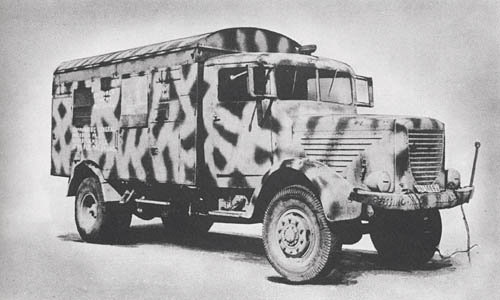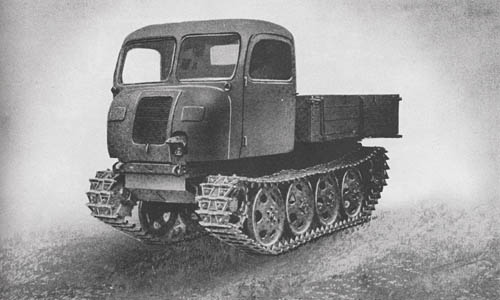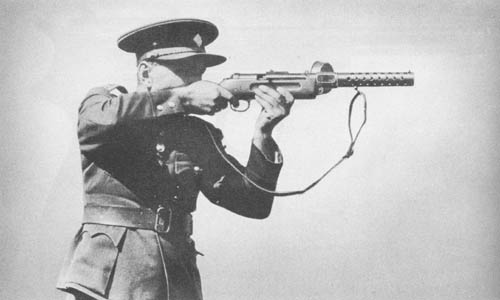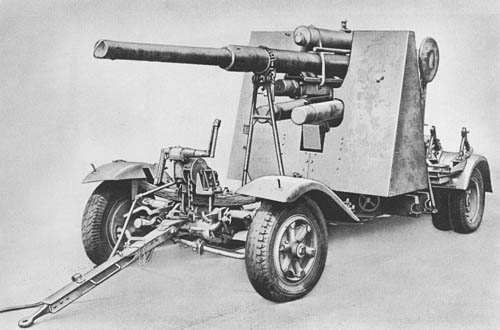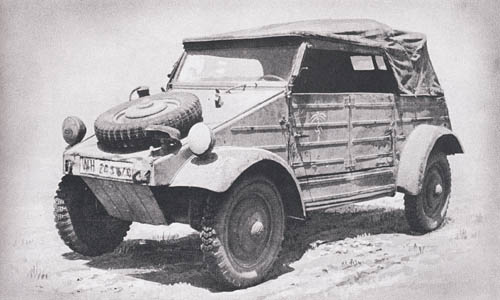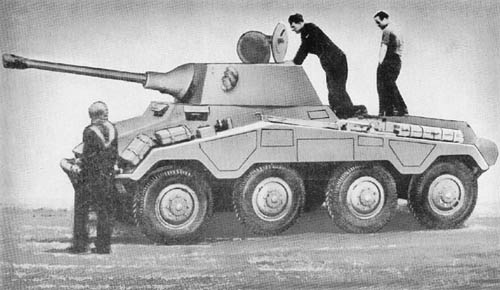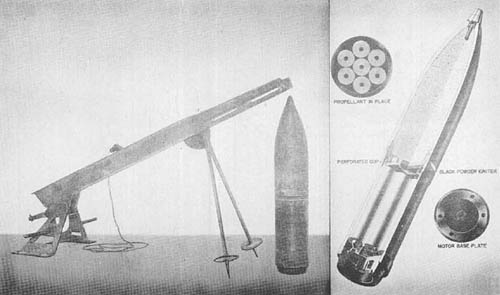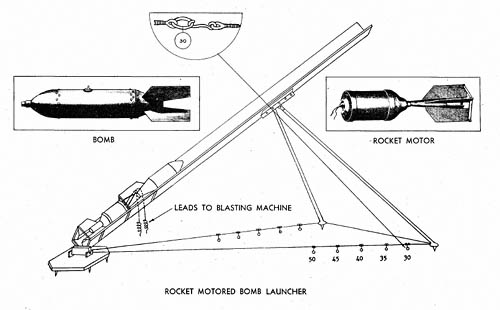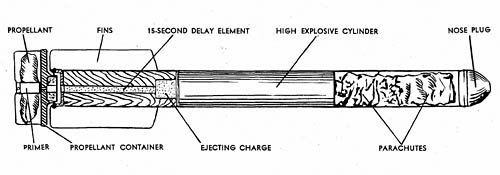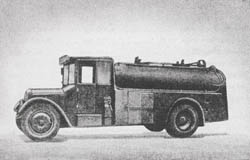 German nomenclature: mittlerer Betriebstoffkesselkraftwagen (o) mit Fahrgestell des mittleren Lastkraftwagen (o).
German nomenclature: mittlerer Betriebstoffkesselkraftwagen (o) mit Fahrgestell des mittleren Lastkraftwagen (o).
English designation: Medium fuel servicing truck with special chassis for medium motor truck (standard commercial vehicle).
SPECIFICATIONS
| Net weight | 5,500 kg | 12,125 lb. | ||
| Pay load | 2,800 kg | 6,173 lb. | ||
| Gross weight | 8,300 kg | 18,298 lb. | ||
| Weight: Front axle | 2,600 kg | 5,732 lb. | ||
| Weight: Rear axle | 5,700 kg | 12,566 lb. | ||
| Length (overall) | 6,750 mm | 22 ft., 1 in. | ||
| Width (overall) | 2,250 mm | 7 ft., 4 ins. | ||
| Height (overall) | 2,600 mm | 8 ft., 6 ins. | ||
| Ground clearance | 240 mm | 9½ ins. | ||
| Tread centers | 1,600 mm | 5 ft., 3 ins. | ||
| 1,880 mm | 6 ft., 2 ins. | |||
| Wheelbase | 4,500 mm | 177 ins. | ||
| Wheel width | 220/460 mm | 8 5/8 / 18 1/8 ins. | ||
| Angle of approach | 60° | |||
| Angle of departure | 23° | |||
| Seating capacity | 1 | |||
| Fording depth | 500 mm | 20 ins. | ||
| Climbing ability | 15° | |||
| Overturn gradient (lengthwise) | 40° | |||
| Overturn gradient (crosswise) | 25° | |||
| Turning radius | 20 meters | 65 ft., 7 ins. | ||
| Trailer load | 2,000 kg | 4,409 lb. | ||
| Engine horsepower | 80 c-v | 78.9 hp | ||
| Piston displacement | 7,000 cu cm | 420 cu. ins. | ||
| Fuel tank capacity | 120 liters | 31.7 gal. | ||
| Highway fuel consumption | 6.7-8.4 m.p.g. | |||
| Average terrain fuel consumption |
German: p. 74.50
